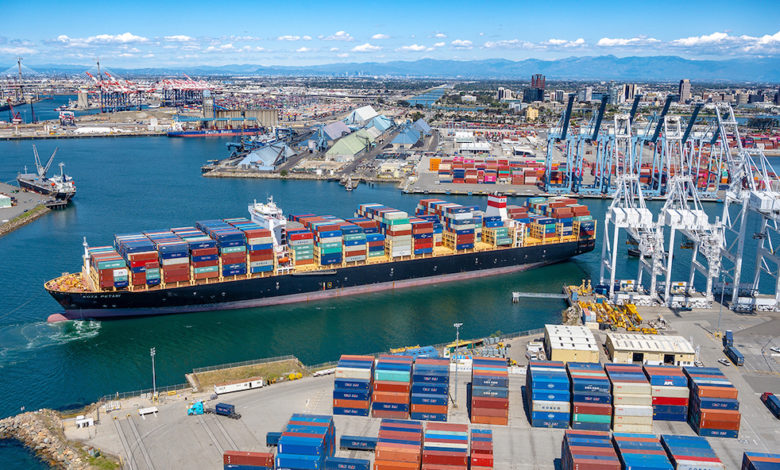Liner contract rates set new records

Contract rates in container shipping are soaring to record levels. The contract rates published on the China Containerised Freight Index (CCFI) last Friday hit 2,074 points. Putting this in context, the combined index peaked at 2,072 points on February 19 following Chinese New Year. The CCFI is defined as being equal to index 1,000 at the beginning of 1998. The previous record was set in May 2012 at an index level of 1,335. Aside from that, the CCFI has only been above index 1,250 at one other time: in the first week of October 2004.
Since the new record of 2,072 was set in February, the CCFI slowly declined to 1,853 on April 16 whereafter the ripples from Suez Canal blockage started having an impact.
Lars Jensen, founder of consultancy Vespucci Maritime, noted in a post on LinkedIn that typically contract rates lag spot rates by around three weeks. Spot rates have been in renewed record territory for much of the last month.
With liner reliability plummeting, and spot shipments increasingly hard to confirm, there has been an uptick in contracted box booking this year.
Data from New York Shipping Exchange (NYSHEX) shows that the concept of enforceable contracts has seen a significant increase on the Pacific headhaul trade in 2021.
In Q1 2020 only 1% of the volume signed on enforceable contracts in the Pacific was for eastbound headhaul cargo – the vast majority of contracted cargo was related to the backhaul market.
In Q1 2021 this has changed to 39% of the volume contracted on enforceable contracts being on the Pacific eastbound head haul trade. As overall contracted volumes has increased as well, this shift is a direct reflection of an uptake on the headhaul and not a down turn on the backhaul.
NYSHEX presently operates solely in the Pacific market.
“Seen in a broader market context, this is reflective of a market where the outlook for 2021 seen from a shipper perspective has clearly shifted to supply chain resilience as there is a genuine concern that there might be periods where not everyone will be able to secure space,” Vespucci Maritime’s Jensen noted on Friday.
Across the board, records are tumbling in the container space. Charter rates, for instance, continue to jump – 4,400 teu ships now able to command $48,000 a day.
“Not only are owners invariably achieving rates higher than last-done, they are also achieving longer periods,” the creators of Hamburg’s ConTex index noted on Friday.
Despite huge shipbuilding orders being placed in the last eight months, many analysts believe the supply/demand situation for the sector remains favourable.
Braemar ACM is estimating fleet capacity expansion of 4.4% for full-year 2021, up from 2.8% in 2020. For the next five years with the current orderbook, the UK broker is predicting average annual fleet growth at 3%. For the previous five-year period, annual average fleet growth was 3.5%.
“With assumed trade growth of an annual average of 3.5% for the five years 2021-2025 and estimated annual average fleet growth of 3% (with current order book), we can see that even with an additional 1.5m TEU of deliveries combined for 2024 and 2025, the supply curve widens as we reach the end of 2025. It seems quite plausible that newbuilding investment has some way to go before a supply bubble will be created,” Braemar ACM suggested in a new container report.
Danish Ship Finance, meanwhile, is forecasting container demand could grow by 5-6% during 2021, with volumes ending up 4% above 2019 levels.
Finally, VesselsValue sees demand growth in 2021 improving 5.3% from 2019 pre-Covid levels, with 2020 having declined 0.7%.
“The demand increase is supported by continued online purchasing but is expected to ease up as the vaccination programmes take hold and mobility starts to normalise. Rebounding manufacturing levels in the Western economies could support demand levels throughout the second half of the year and into 2022,” VesselsValue predicted in a new report, suggesting 2022 would see a healthy demand growth of around 4%.
